Drift trike: DIY guide
Many have asked me about the components and process of assembling my Drift Trike. I promised to share, so here it is:))
One late evening in August 2014, Denis Myagkikh and I were, as usual, engaged in the resale of pit bikes. From a pit bike we bought for a pittance, only the frame remained, which Denis promptly discarded...
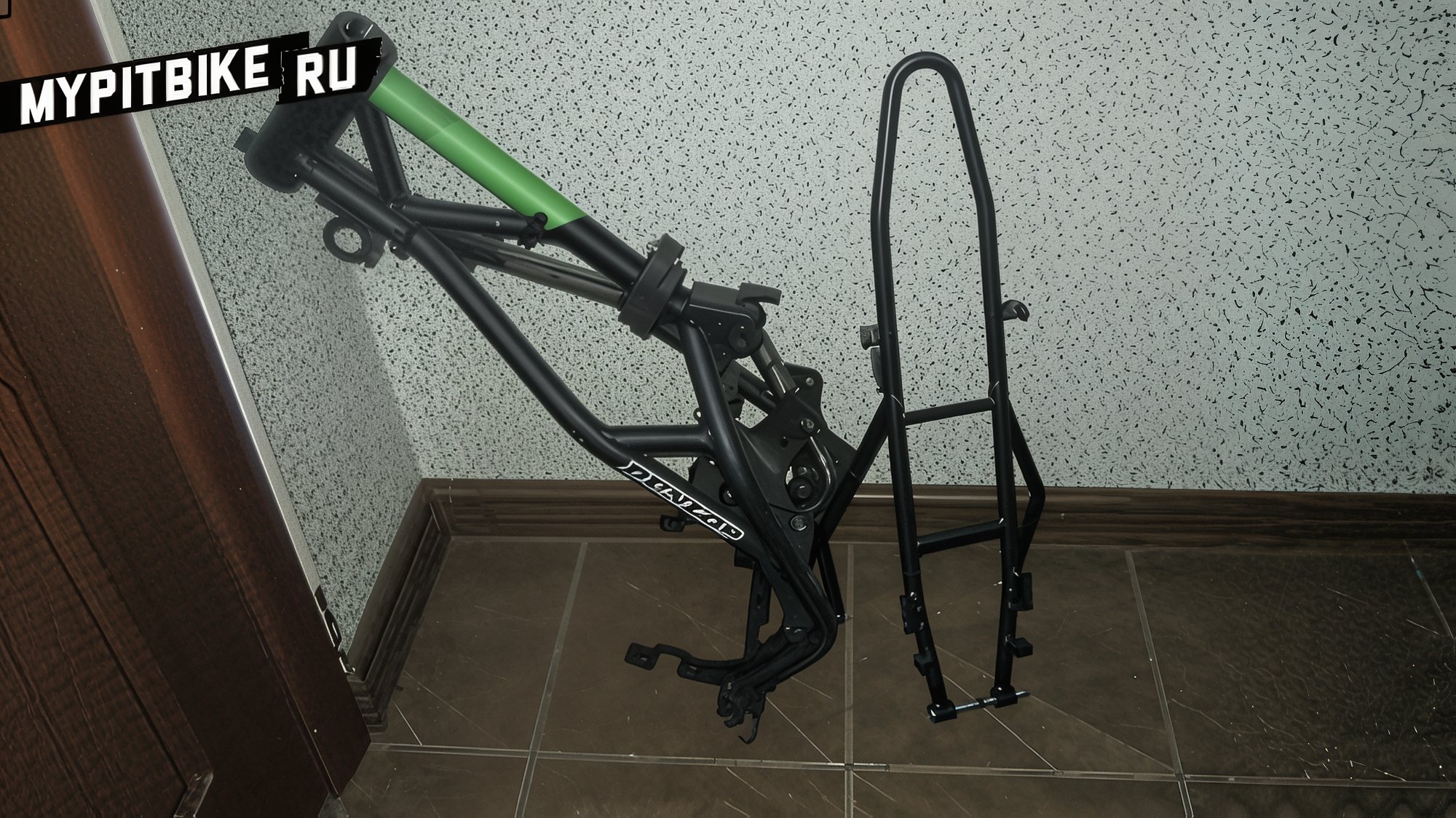
With nothing better to do, I took it home. I cleaned it, repainted it gold, made some adjustments, unearthed some spare parts, and gradually began assembling what was then just a regular pit bike project. I diligently searched for the cheapest used parts, traded some for MP3 players, ordered from AliExpress, Denis found some in his stash, and we bought some second-hand, repaired, and refined them.

By early winter, we stumbled upon a video by the Jazz Motors Club team about a drift trike built by Pasha Toporkov, and we were inspired by his project. We waited three months for the rear part of the pit bike (Drift Kit) to be manufactured.
The stock rear brake fit without issues, as did the swingarm mounts to the drift kit, but we encountered a problem with the short chain during installation. The sprockets were 17/33, and the longest available chains in stores didn't fit, so we had to combine two 428 DID chains, which we did.
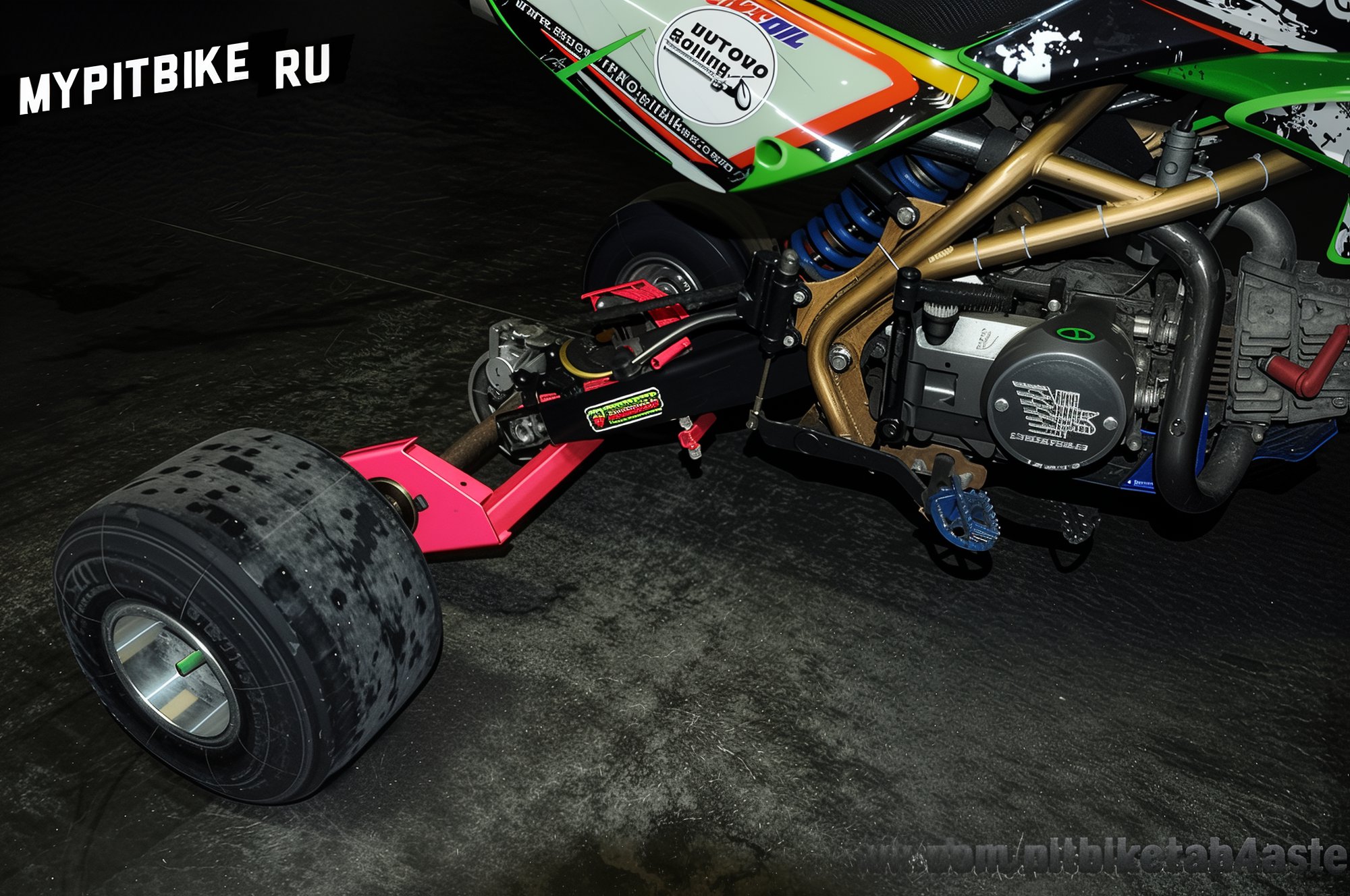
By the end of June, we were fully tuning the new ZS 155 engine. And exactly nine months later, Denis and I brought this marvel to life:)))
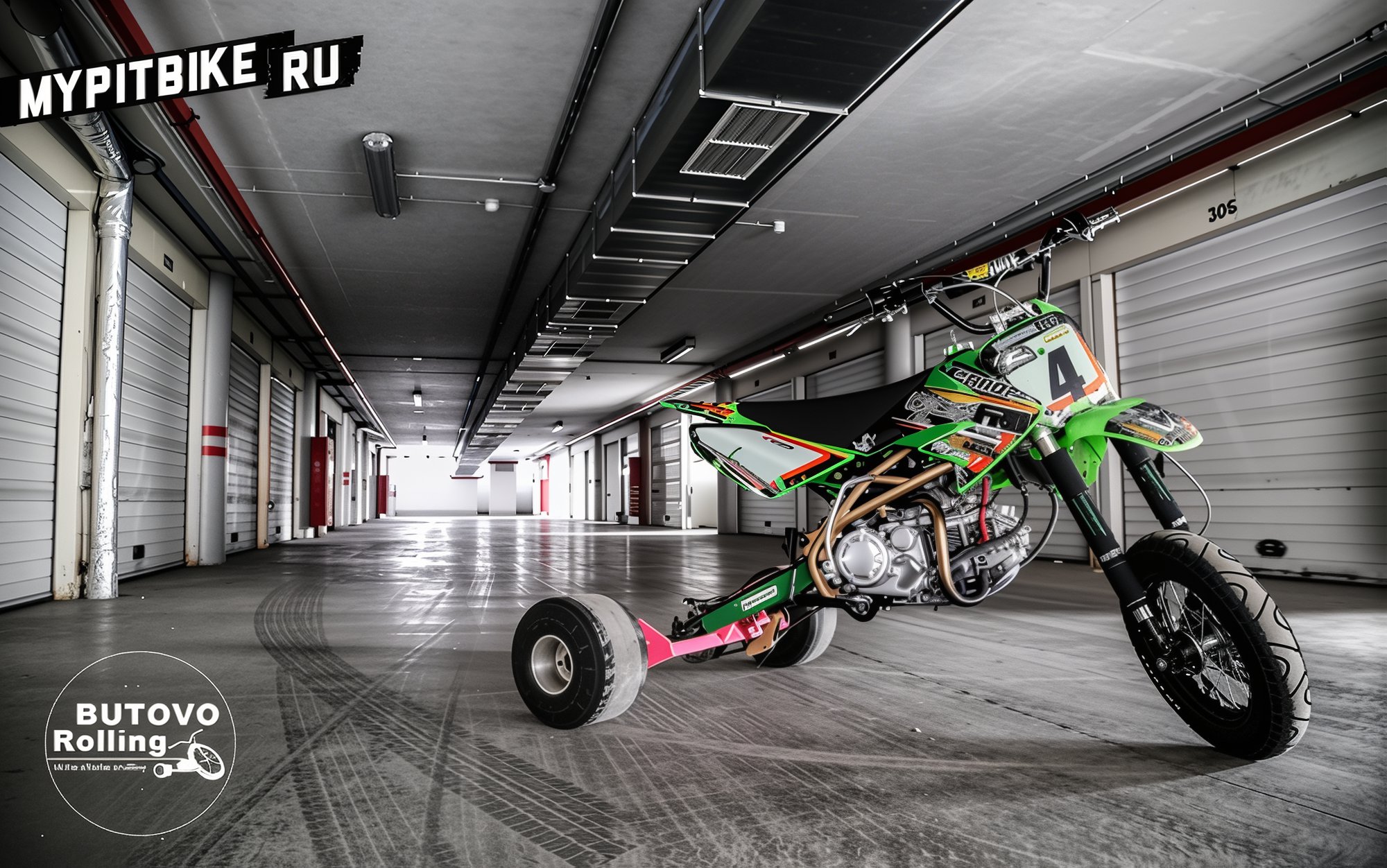
During its use in summer and winter, with and without plastic wheels, we encountered numerous issues, such as sudden bike spins leading to broken clutch levers, brakes, and bent handlebars. Constant impacts with curbs, stumps, and stones severely damaged the wheel rims. The swingarm bearings endure enormous stress, causing them to wear out quickly. Perhaps the biggest issue was the swingarm itself; the first swingarm from KAYO broke in the first week.
We had the idea to find the shortest swingarm to reduce stress. We took one from a YCF 125, and to our surprise, it fit without modifying the frame. We rode it with both the 160 and 125 engines; in my opinion, if you don't mind spending on repairs for the 160, choose it, but the 125 performs adequately.
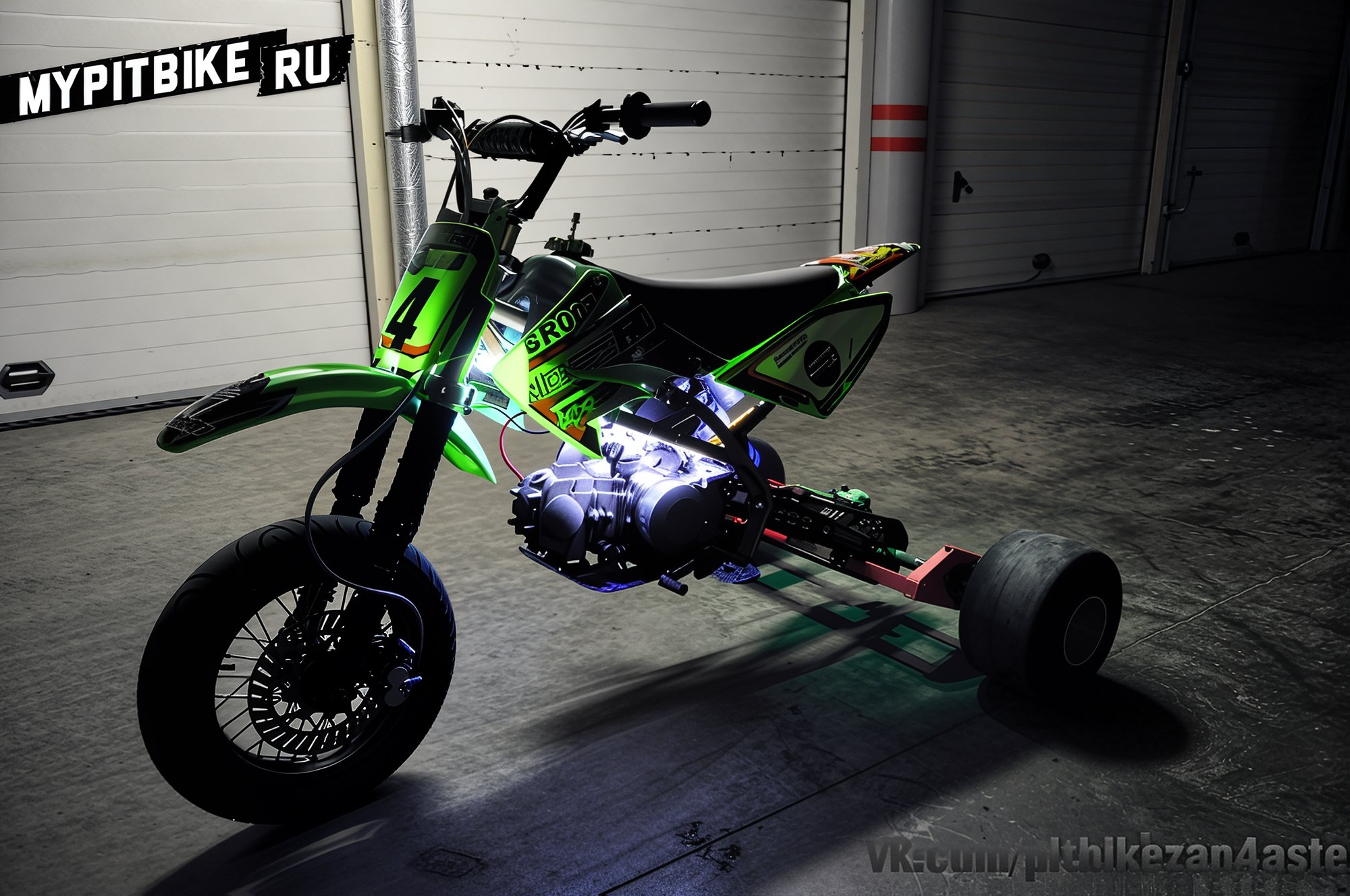
But all these problems were worth the thrill and sensation of drifting sideways on wet asphalt or on ice with spikes in winter:)
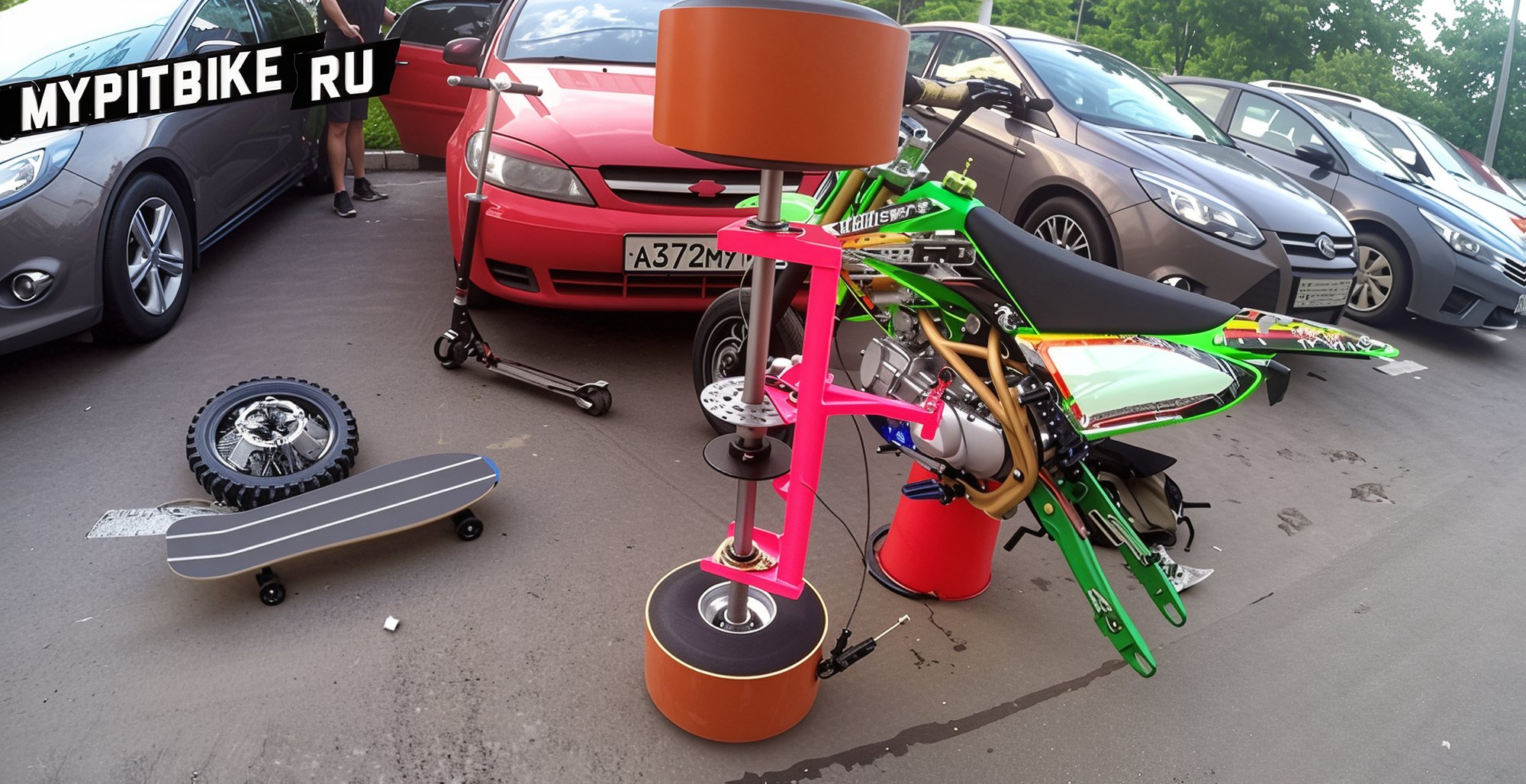
Now, more than a year after building the drift trike, we've had our fun and sold it on two wheels, keeping the drift kit for ourselves.
Based on materials by Alexey Rulev